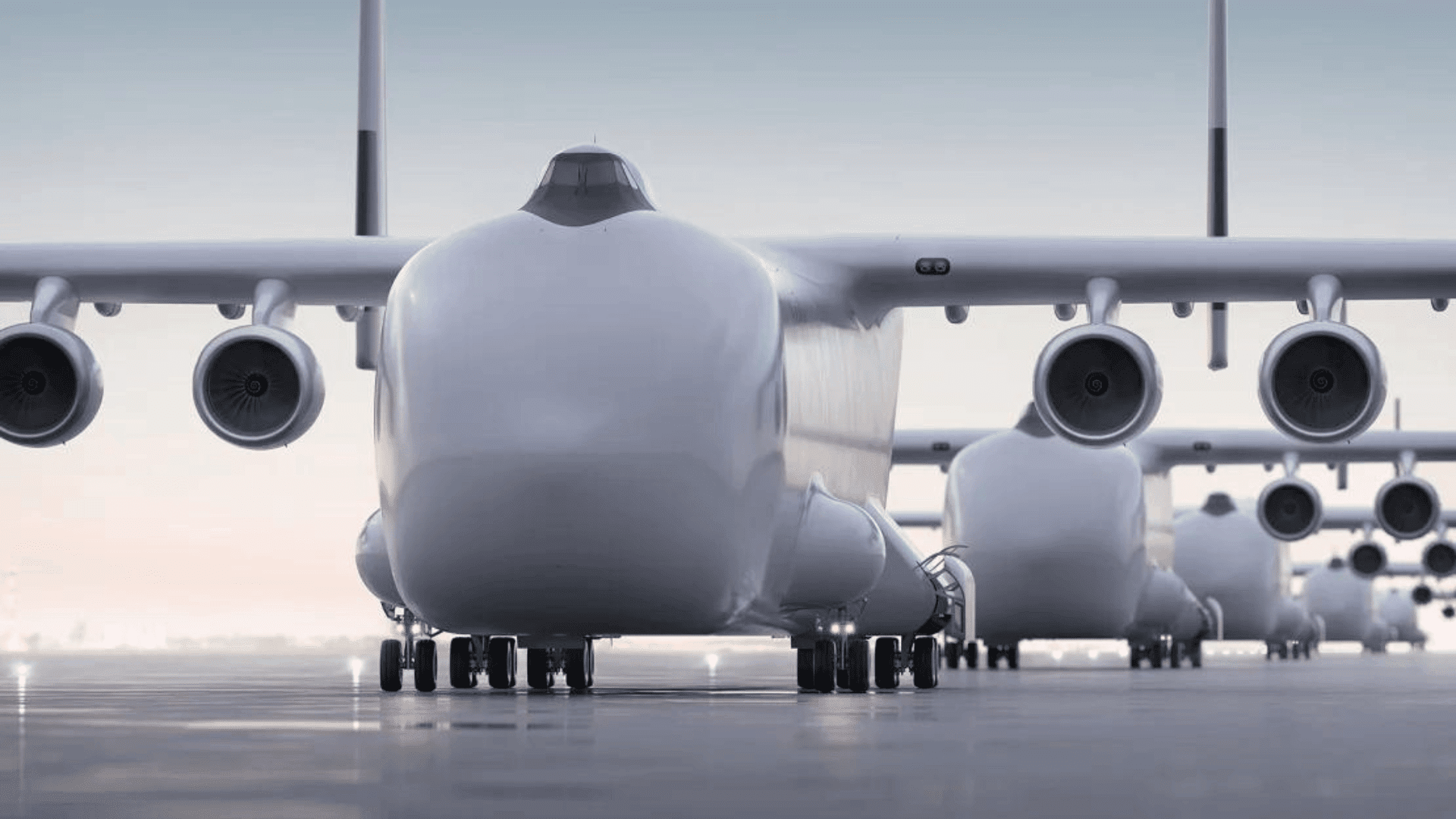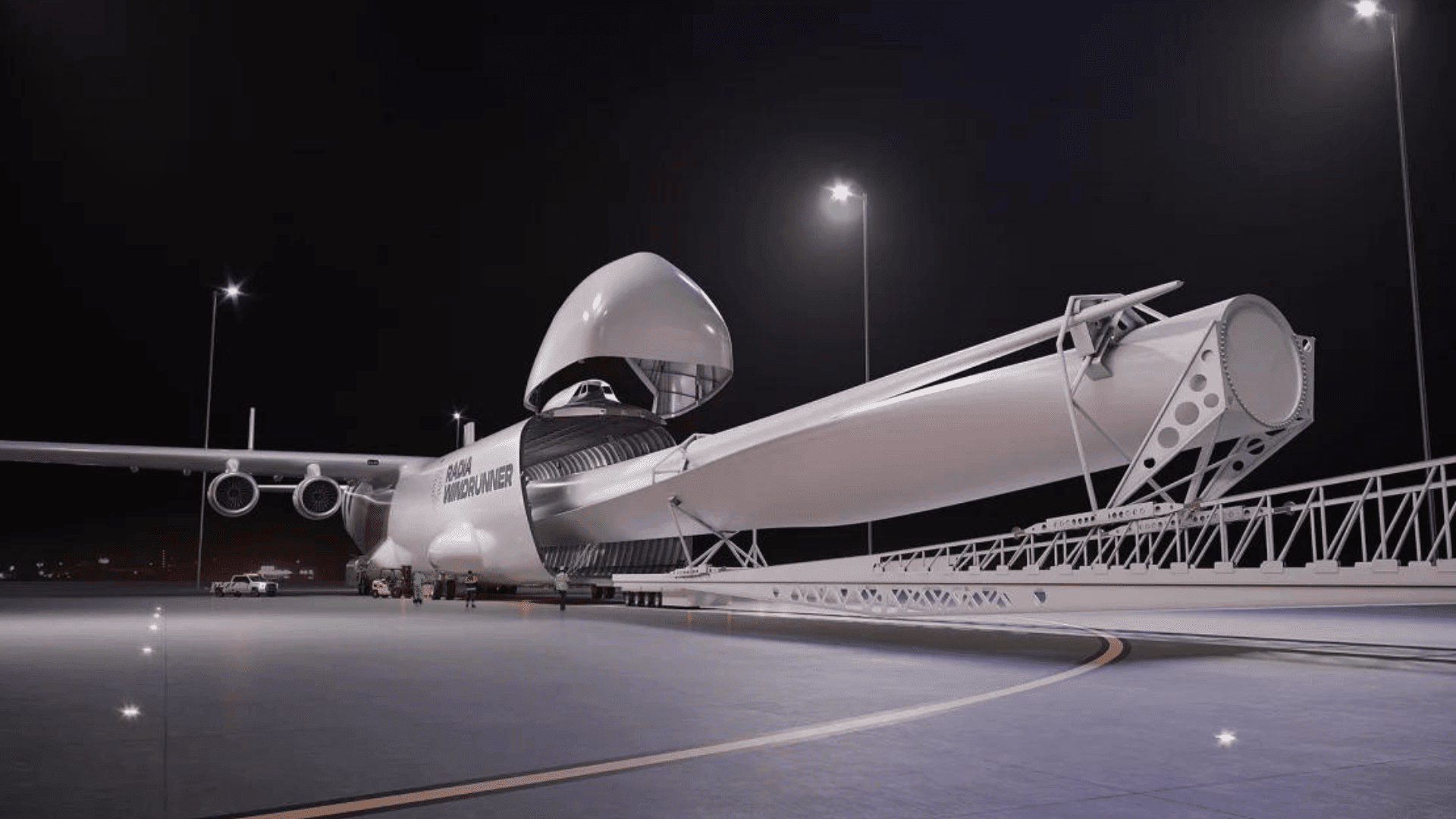A Colorado-based energy startup, Radia, is developing the largest plane in aviation history. The project’s goal is to help the world meet its decarbonization targets.

The WindRunner airplane’s mission will be to deliver large 300-foot-long blades directly to wind farms. The design will be powered by sustainable aviation fuel and needs only a packed dirt or gravel runway to land on.
This plane could help the global energy crisis by delivering the parts for larger wind turbines, that can produce more power than their smaller counterparts, which are too big to be transported by road.
It’ll operate from regional hubs, stated Radia to CNN, delivering where needed – and “can land on airstrips as short as 6,000 feet (1,800 meters), something no other large commercial aircraft can achieve.”
Explore Tomorrow's World from your inbox
Get the latest science, technology, and sustainability content delivered to your inbox.
I understand that by providing my email address, I agree to receive emails from Tomorrow's World Today. I understand that I may opt out of receiving such communications at any time.

WindRunner will have a cargo bay volume of 272,000 cubic feet, enough to hold three Olympic swimming pools. That’s 12 times the volume of a Boeing 747-400 and, at 356 feet in length, it’s 127 feet longer too.
Radia has also created a reliable design, saying it’s focusing “on existing technology and safety by using, where applicable, tried-and-true aviation materials, components and fabrication techniques that have FAA [US Federal Aviation Administration] approval, are already in mass production and are lowest-risk.”
Radia is relying on research organization Bloomberg NEF’s estimation that up to $10 trillion will be spent on the onshore wind through 2050. The development of WindRunner is to enable GigaWind, the XXL turbines made by Radia’s partners, which include five of the world’s top six turbine manufacturers.
Turbine blades today are typically 230 feet or less, but Radia wants to deploy blades of up to 341 feet. The company stated that GigaWind turbines could potentially be two to three times more powerful – and two to three times more profitable than those deployed today.







